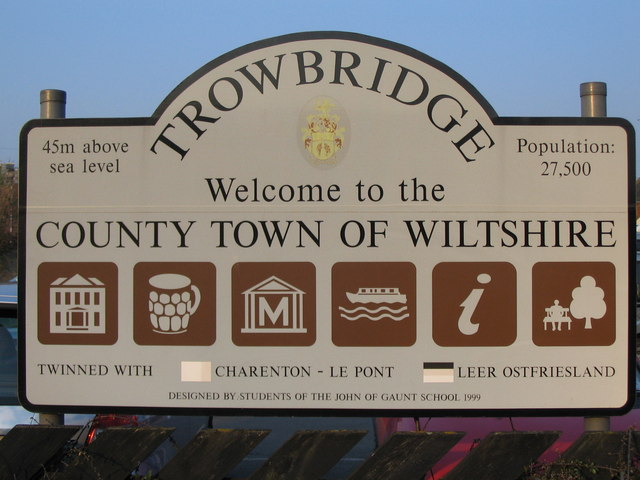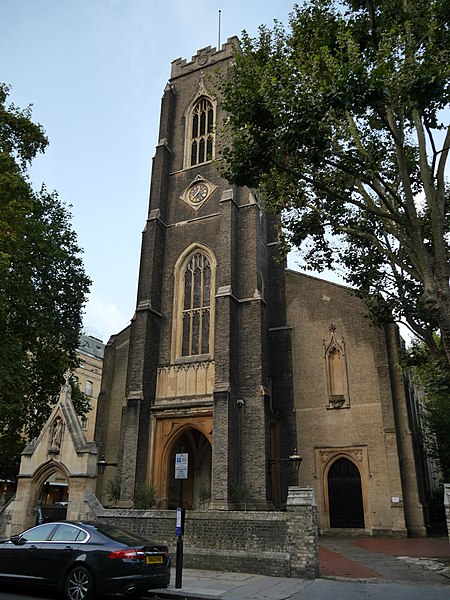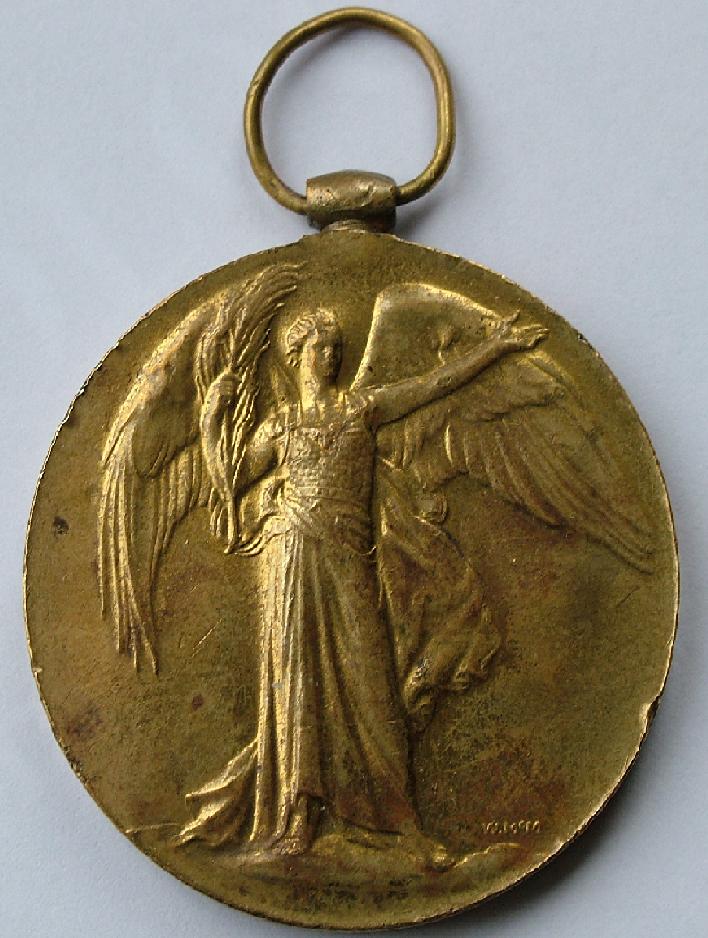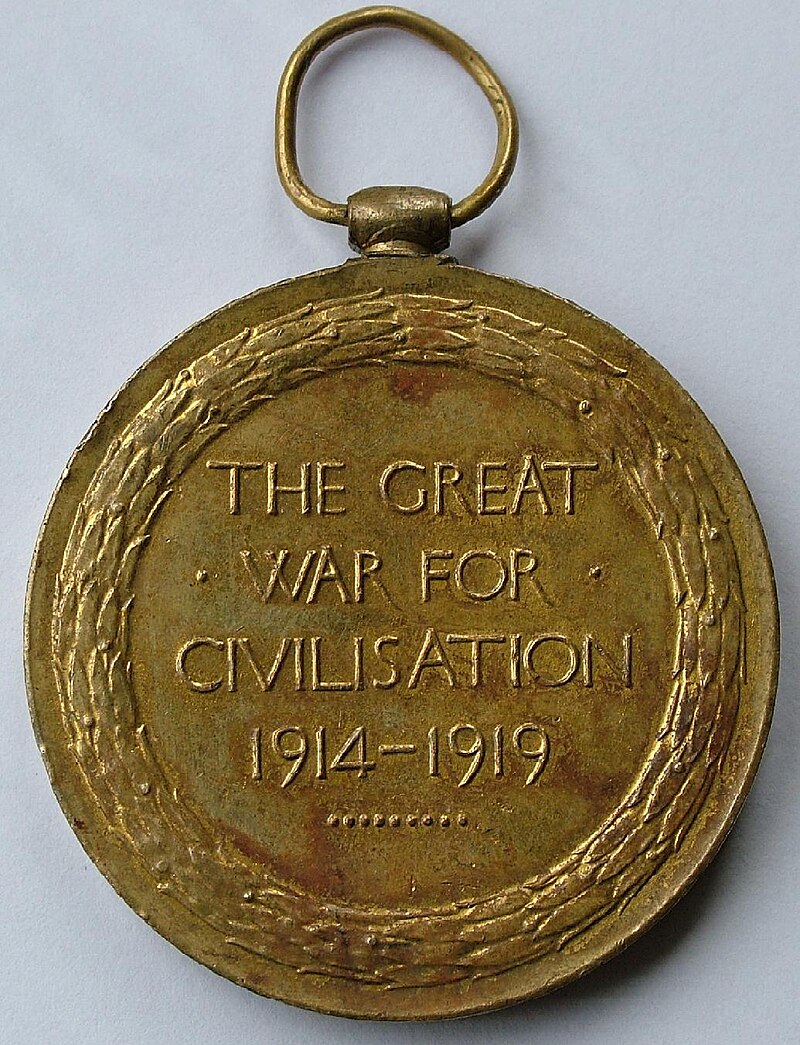I finished the first of
these posts on Herbert Sidney Edgar by pointing out that his decision in
1904 to take the Army Certificate of Education Third Class was probably
motivated by a desire to win promotion to corporal. Nevertheless, Herbert was
to end his first stint in the army almost exactly ten years later with the same
rank - Gunner or Private - at which he'd entered.
He continued to progress at a snail's pace up the pay grade
for his rank. On March 29, 1906 his 'Good Conduct' bonus was raised from 6d. to
7d. a day - this meant that he had passed another two years without being
punished, and he was given a second badge and the extra penny accordingly.
In spite of his lack of promotion he continued to like army
life - or at least fail to find an acceptable alternative. On 26 February 1909-
still in K Battery but now at Trowbridge
Station in Wiltshire where he'd been transferred from Christchurch - he extended his service to 12 years with the colours.

By Phil Williams, CC BY-SA 2.0, https://commons.wikimedia.org/w/index.php?curid=12903487
The
paperwork for this extension tells us that his military character was judged to be 'Very
Good' but it also gives us a clue as to
why his army career had stalled. His work is described as 'Officer's servant',
and it looks to me as if 'barber' has been crossed out. I'll come back to the
significance of this later.
On December 23, 1911 he was transferred to the 46th. Battery of the Royal Field Artillery. In my first post on
Herbert I mentioned that in 1899 the Royal Artillery was reorganised into three
sections, two of which were the Royal Horse Artillery and the Royal Field
Artillery. In other words, this was a 'family' transfer, and my guess, because
of what happens next, is that he
requested himself.
On December 27, 1911 Herbert Sidney married Alice Stephenson
at St. Paul 's,
Knightsbridge.

St. Paul's Knightsbridge, 32a Wilton Place, Belgravia: Wikipedia, courtesy of User Edwardx
He didn't need to take leave for the occasion. The Reverend George
H. Peskett officiated and Herbert's sister Katy Mary Edgar and Sgt. E. J.
Shoesmith, presumably one of his army friends, were witnesses. The couple lived
at 36, Jackson Street ,
Woolwich. It seems that Alice
was still there at or soon after his
attestation for 21 years service in August 1912.
There is something of a mystery about the church they were
married in. Two documents in Herbert's Army pension records on Ancestry.com put the location of the
wedding at St. Paul 's
beyond doubt. But a document on Find My
Past has it at St. George's ,
Hanover Square [1].
Now in the 1911 Census Alice Stephenson was a parlour maid in the house of
Elizabeth Jane Osborne, a Madras-born widow who lived
at 33, Wilton Place, which is in the Civil Parish of - St. George's,
Hanover Square!

Perhaps the wedding was planned and announced at St.
George's and switched at the last minute to St. Paul 's. Perhaps there is another
explanation. In any case, there's more to this wedding than meets the eye. Alice
was about four months pregnant with Thomas,
her first child by Herbert, on the day of her wedding. And Herbert's family - which reportedly considered Alice 'beneath' their son - boycotted the wedding - neither parent was there, and of Herbert's many siblings, only Katie Mary was present (and acted as witness).
Although Alice
seems to have been living in Woolwich, she joined her husband for the birth.
Thomas Herbert was born at Bordon Camp in Hampshire on May 3, 1912. An entry on his medical records card states
he arrived at Bordon on March 18, 1913 - I think that this is a mistake for
March 18, 1912. On August 6, 1912 he was re-examined medically at Bordon
because he'd asked to extend his service. The form repeats some details from
the 1901 examination but gives us new information. His physical development was
'very good' he had no smallpox marks, no minor defects, no marks indicating
congenital peculiarities or previous disease. He'd been vaccinated since
infancy and had two marks on his right arm and four on his left. He was considered fit for service either at home
or abroad..
On August 9, 1912 he signed up for 21 years in service. This
doesn't necessarily mean he expected to be a full-time soldier much longer: he
was opting for 13 years in his regiment, and 8 years in the Reserve, the first
cohort of those who would be called up if necessary.
It seems that in late 1913 Herbert started to acquire the
paperwork necessary for his shift from
the 'colours' to the Reserve.
We've seen that in 1909 he was acting as an 'officer's
servant' and the Employment Sheet drawn up on October 19, 1913 shows that he
was still one, and it's clear in what capacity. Herbert is described as smart,
intelligent and 'used to driving a motor car'. His military character was
'exemplary' which again suggests a perfect disciplinary record. His Regimental
Conduct Sheet was also completely clean.
In fact, every comment on Herbert in his pension records is positive - so why
did he leave the army with the same rank he entered? It's possible that his
performance in training exercises - as far as I can make out he never saw
fighting in this first period of service - suggested that he wouldn't have been
much of a leader if called on to operate the guns for real. But it's also
possible that he was simply too useful in a non-combat capacity: although
things developed quickly from the situation in 1895 when there were only about
15 cars in the whole country, motoring
remained a rich person's pursuit in the years before 1914[3]
and it's possible that Herbert's driving skills were so scarce as to be
considered more useful than his gunnery ones.
His Discharge sheet describes him explicitly as a chauffeur, so he was probably
driving full time by 1914.
Another piece of paperwork from the time of discharge that
illustrates his good army character is the Certificate of Sobriety and
Trustworthiness he was issued:
I believe that Herbert
Sidney Edgar is thoroughly trustworthy and to the best of my belief has not
been under the influence of liquor during the last three years of his Army
Service, which expired on 3. 6. 1914.
On January 9, 1914 he was posted back to the Royal Horse Artillery,
to the Y Battery, as a gunner. This seems to have been a preliminary to leaving
the army. His second son, Wilfred 'Bay' Edgar was born in Woolwich in the first
quarter of 1914.
On June 3, 1914 he was getting 6d. per day extra 'proficiency
pay'. Basic pay was 1s. 2.5 d per day (it was 2d. extra if, as seems to have
been the case, he was still considered as being in the Horse Artillery).[4] On
June 6, 1914 he was discharged, at his own
request after the thirteen years service he had eventually agreed to. He left
the army at Woolwich, intending to live at 36, Jackson Street .
My guess is that he planned to support his wife and two
children as a driver, but any hopes for using the skill he probably learnt in
the army as the basis of a civilian career were soon to disappear. Two months
after his discharge Britain
declared war on Germany and Austria . At his
age he was probably a Class 1 Reservist - liable to immediate call up.
Presumably because of his ability to drive he was assigned to the Royal Army Service
Corps (RASC - the 'Royal' was added in 1918 and some WW1 sources refer to this
body as the ASC), which is responsible for providing the troops with all
provisions other than weaponry and ammunition.
No details of Herbert's service in WW1 have survived, but we
can draw some conclusions from the medals he was awarded (and not awarded) and
from the Protection Certificate and Certificate of Identity, which like all
departing servicemen, he was issued on leaving the army.
His Medal Roll tells us that his rank was Private - so no
promotion in his second army stint either - and that his regimental number was
M2/099872. The 'M' means 'Mechanical Transport' - which makes it almost certain
he worked as a driver. Unfortunately the section marked 'Unit' on his Certificate of Protection is illegible
so I don't know exactly which branch of the RASC he was in, so we can only get
a very general sense of the kind of work he did.
All Mechanical
Transport Companies were part of the Lines of Communication and were not under
orders of a Division, although some (unusually known as Divisional Supply
Columns and Divisional
Ammunition Parks
Herbert was awarded the Victory Medal and the British Medal but
not the Star.


Victory Medal - Reverse: By en:User:Bjw3 - en:File:Victory-Reverse.jpg, Public Domain, https://commons.wikimedia.org/w/index.php?curid=9844834

I think that means he was in a war zone- his Certificate of
Protection specifies France
- but not in 1915 (which is why he didn't get the star). These three medals
were awarded for simple participation, not for valorous deeds.
So really all we know is that Herbert was probably a driver
and he spent some time in the French war zone in the period 1916-1918.
His Certificate of Protection tells us he was discharged
from Fovant Dispersal Camp in Wiltshire and the home he went to was 3 Consort
Villas, Arthur Road , Windsor Alice had moved there at some point during
the war with her youngest child, Wilfred, and Thomas and Arthur joined them
later. Her mother - Eliza Stephenson - also
came to live with them.[6]
She died in 1917 and. according to Bay, is buried in Clewer St . Andrews.
Herbert was demobilised on June 6, 1919 - five years to the
day after he'd left the army for the first time! His medical category was A1. In the event of (another) emergency he was to
re-join the army at Bulford on Salisbury
Plain-
I'll say more about his post-war life and children in my
next post on his wife Alice. The family moved from Arthur Road to a large Victorian semi in nearby Vansittart Road.

Herbert in Vansittart Road
Herbert worked as a chauffeur or driver and in WW11 he
continued this work, at some point driving German prisoners of war. When I went
to German in 1971 I visited a Hamburg
man who he'd befriended when he was captured by the Americans as a very young
soldier ('Get out of the ditch, Nazi Boy!').
Herbert died on 17 December 1960 at King Edward V11 Hospital
in Windsor .
Probate was granted to Bakery Manager Thomas Herbert Edgar - his oldest son - and civil servant Rupert Charles Francis -
husband of his daughter Gwyneth. The sum was £1,115 18s. 2d which I assume went
straight to Alice, who survived him by over 20 years.
[1]
Marriages Registered in October, November and December 1911, STE, 189 - http://search.findmypast.co.uk/record?id=bmd%2fm%2f1911%2f4%2faz%2f000912&parentid=bmd%2fm%2f1911%2f4%2faz%2f000912%2f064
[2] I am
almost certain that Mr. Stephenson is dead, but as I have not seen a death
certificate and it is not quite 110 years since his probable date of birth I am
withholding his full name in accordance with Blog policy.
[3] http://www.bbc.co.uk/schools/0/ww1/25237886
[4] http://www.1914-1918.net/pay_1914.html
[5] http://www.longlongtrail.co.uk/army/regiments-and-corps/the-army-service-corps-in-the-first-world-war/
[6]
Wilfred's letter.

No comments:
Post a Comment